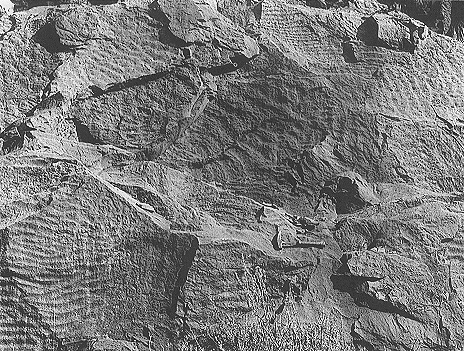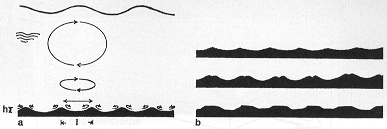

Wave ripples on vertical beds
Plate 46
The upper surfaces of several sandstone beds allow us to observe some variety of ripple forms and sizes. Both symmetrical and asymmetrical ripples are present on different bedding planes, the majority of them belonging to the oscillatory type produced by wave action.
Drawing a shows how the orbital motion of a wave transfers a shear stress to the bottom. The orbit flattens downwards until it becomes a to-and-fro linear move-ment.
The silhouettes of symmetrical ripples (a and b, top) tend to a trochoidal curve in equilibrium conditions. This shape is not symmetrical with respect to the horizontal plane, whereby it can be used as a way-up criterion in tilted beds (crests have a smaller curvature than troughs). When ripples are modified by water shallowing (see plates 31, 51-53), the polarity is recognizable as well.